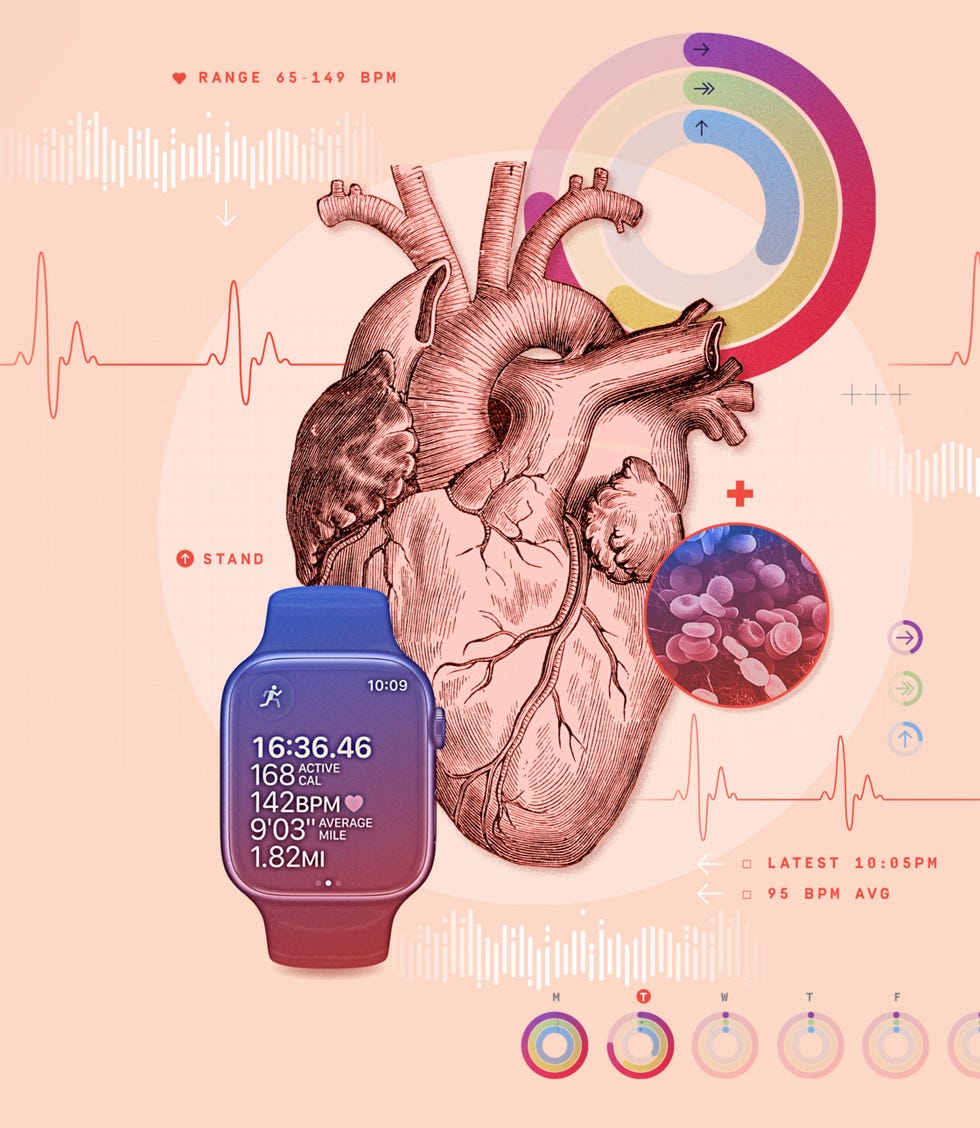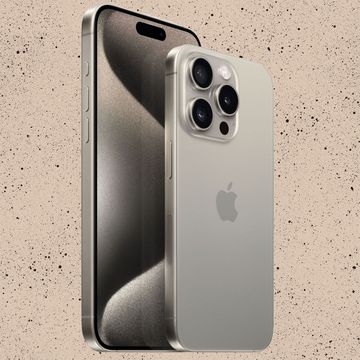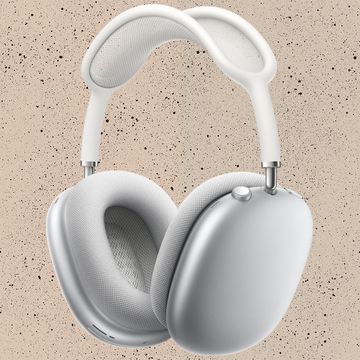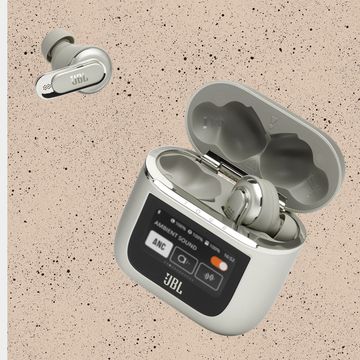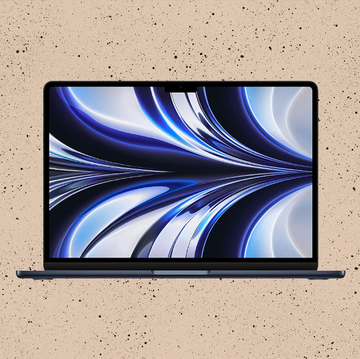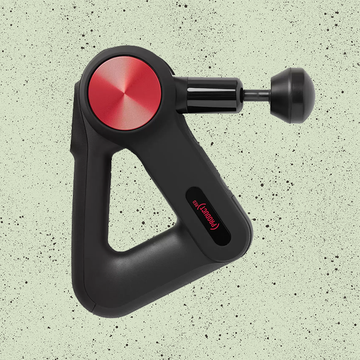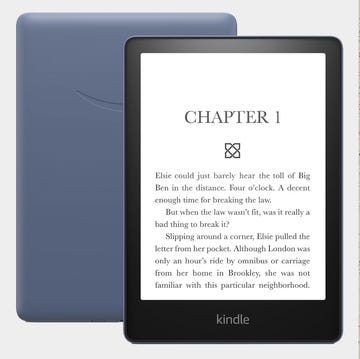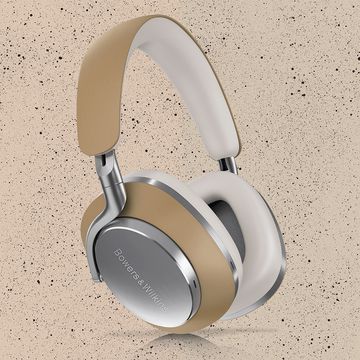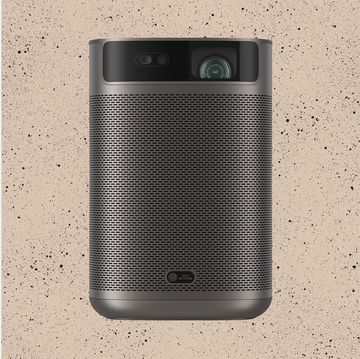Michael had big plans.
He was working on the old barn behind his old house, which he and his wife had bought less than a year earlier. The barn looked tired. Some of the posts showed bug-nibbled rot. Some of the windowpanes were gone. But Michael saw it for what it was: a beautiful red barn, solid where it counted, capable of wrapping its walls around all sorts of memories we would have forever. He was nearly finished converting a portion of it into an exercise room (including a sauna). There were plans for a wine cellar in which you could host a dinner for 12, and a party space with a floor girded for dancing and twinkly lights in the ceiling.
I told Mike that my neighbour Andy had a tool he was trying to get rid of and asked did he want it. Andy works at a firehouse, and it’s not unusual for him to send me a text asking if I want some odd thing one of the guys brought in. (“Do you want a vacuum sealer? Brand new.” “Do you need any scrap metal picked up?” “Do you like pound cake?”) This time it was a vintage Craftsman shaper, a four-legged machine that can create customised decorative wood moldings—and that must have weighed 150 pounds.
When I texted Mike asking if he wanted it, those little dots bubbled up within seconds, signalling that he was typing a reply. I already knew his answer.
That’s how the three of us ended up in Andy’s driveway on the day after Christmas, 2020. This was in the pre-vaccine Covid days, and we stood outside wearing masks and fist-bumping holiday wishes. The sun shone brilliantly in a clear sky, so bright that everything looked like it was in high-definition. After a few shivering minutes, Andy and Mike lifted the machine into Mike’s SUV. “Don’t worry, we got it,” Andy said to me—Mike laughed at that. (I was, after all, his little brother, if only by 14 months.) The thing was heavy, but they were both healthy 40-somethings and they slid it in the back with only minimal whining.
“Beautiful,” Mike said, flipping the tailgate closed. “This will be great.”
This will be great. Mike’s life was a successive series of plans hatched, schemes dreamed up, and visions sketched out on envelopes and legal pads. He won the egg-drop challenge in sixth grade. He replaced the engine in his go-cart with the engine from our father’s lawnmower—then removed the safety bar, to make it go faster. He opened a restaurant when he was 23. Twenty years later he conceived and launched Tentrr, a national network of privately owned campsites. And even when he couldn’t will some dream into reality, the rest of us were left standing there watching him, smiling, shaking our heads. We marvelled at him because he tried.
As he got into his car in Andy’s driveway, I didn’t hug him—hugging still wasn’t a thing at this point in the pandemic. But we made plans to get our families together to exchange gifts on the first warm day that week. We said, “Merry Christmas.”
We said, “Okay, love you. See you soon.”
He drove off with his new shaper, so pleased.
The next morning, my father called at 8:30. I can still hear his voice now, and in my memory he sounds confused, and wounded, as if he’s forcing himself to speak, as I am now forcing myself somehow to type the words he said next: “Michael died in his sleep last night.”
■■■
I’ve always been pretty healthy. I don’t get sick much, and I’m usually in good enough shape. I play basketball for two or three hours every Sunday. I try to ride my bike 10 miles once or twice a week. Push-ups, when I think of it. Yard work. Vegetables from the garden. Organic fish. Less ice cream lately. Fking quinoa.
Healthy.
Because of this, my whole approach to health and fitness was always low-tech. I had never been drawn to trendy wearable devices, which seemed more cool than useful. When the Apple Watch came out in 2015, I was intrigued, but for decidedly non-health reasons. You could conveniently, safely answer phone calls while driving. You could tell it what music to play, surreptitiously peek at texts during a meeting, check your heart rate, glance at weather and sports—all without digging into your pocket or purse for your phone, which 35 percent of Americans do more than 50 times a day. And yes, you could track your heart rate and count how many steps you took, how many miles you rode, and, somehow, how many calories you burned. There were metallic bands and sweatproof sport bands and stylish leather bands.
I tried several iterations of the Watch over the years, and each time, I told myself this was the year: I was going to wear it. And I was going to be even healthier, and track…all the healthy stuff it could track.
But mostly I used it to conveniently, safely answer phone calls while driving. I’d wear it for two or three weeks before forgetting to charge it every day until, eventually, I lost track of where I’d put it. After all, I was healthy.
Now here was evidence—the worst kind of evidence—that none of us apparently know squat about how healthy we are. Mike was healthy, wasn’t he?
We waited three months for the autopsy report—this was peak Covid, and the medical examiner’s office was behind. The weeks slid by in a blur of sporadic sleep, extra whiskey, and hours staring into fireplaces at the homes of various family members. Finally, one sleety day, the report came. Cause of death: hypertensive and atherosclerotic cardiovascular disease.
My brother had died of a massive heart attack. He was 46.
“MANNER OF DEATH: NATURAL.”
This made no sense. He had no symptoms—at least none so bad he felt compelled to share with anyone, including his wife. He was active—he and Andy popped that Craftsman into the truck like it was nothing. (And no, that effort had nothing to do with his death.) He worked on his barn. He skied—he had been to Aspen with a friend the winter before. After Mike died, his friend said he recalled Mike being out of breath while they were skiing, but they were at high altitudes and Mike wasn’t exactly a marathon runner, so it didn’t seem odd at the time.
None of this made any sense.
Except that it did. As much as my parents and my sisters and my wife and Mike’s wife and I could all stare at each other, mouths hanging open, telling ourselves in pleading tones that this just doesn’t happen, the fact is, it does. Heart disease is the number one killer of men of all ages, according to the CDC. You just don’t think it could happen to you, or to your brother, only 14 months older than you, who you just saw that afternoon, and he told you he loved you, and that he’d see you in a few days. And then he vanished.
■■■
Why revisit so publicly those stinging moments of excruciating pain, personal moments I do my futile best to shove into the darkest corners of my brain, every day, even now?
I guess because I hope maybe it could help some people. I feel a little uncomfortable telling the story of my brother in this context. But if I didn’t believe in the Apple Watch, I wouldn’t endorse it.
When Mike disappeared, I didn’t even have a primary-care doctor. I got one quick and asked him to refer me to a cardiologist. I requested and underwent every heart test they had, the most important of which was a CT calcium test, which checks for calcified plaque in your arteries. My score on that was zero. My cardiologist wrote in the notes: “This is the best result possible. Good work!”
I got a coronary angiogram, which checks blood -flow into the heart. In each part of my heart, the finding was identical: “Normal and free of atherosclerotic disease.” That strange word I never knew before, and now will never forget.
A relief, of course, that I wasn’t about to join my brother, as terribly as I missed him. But it wasn’t enough. One afternoon last summer I was riding my bike up a dirt hill. My heart pounded and I was sweating, and I had two competing feelings: I felt strong, because my officially healthy heart was pumping blood as it should, powering me up the hill; and I felt terrified that the test had missed something, and that some dog-walker would find me in the morning, dead, still wearing this hideous fluorescent-yellow jersey, the little LED strobe on my bike frame still flashing.
By this point, the Apple Watch had become more advanced in its health functionality. There were others, too—from companies like Fitbit, Garmin, Oura, Whoop. The idea of gathering data suddenly seemed to me like a very good idea, and I started wearing the Watch again—the Series 7. As of today, Mike died 18 months ago, and I’m still wearing it. This morning I walked 1.36 miles to work at an average pace of 18:55, burning 178 calories and maintaining an average heart rate of 95 beats per minute.
Apple Watch can do a lot of stuff I don’t need, which I guess is great for people who do need it. Its most advanced cardio power is the ability to detect signs of atrial fibrillation (A-fib), an abnormal heart rhythm that can have few symptoms and can cause catastrophic problems like stroke, blood clots, kidney and heart failure, and death. Some doctors have noted that it can create false alarms—wearers who get a ping signalling a random irregularity with their heart and demand a test from their doctor, when actually there’s no problem. These people worry about the strain this may place on our pandemic-taxed healthcare system. To which I say: If a ping keeps some other family from experiencing what mine did, and keeps one vibrant, beautiful, hilarious, extraordinarily intelligent, generous 46-year-old guy who’s also a great sailor and a snappy dresser from falling asleep on his couch watching Bridgerton and then dying, and 100 other pings are deemed a waste of time, my condolences about the strain on our healthcare system (which is messed up in so, so, so many other ways) but, you know, deal with it.
Also cool: It tells you how long to wash your hands and vibrates with a cheerful “Good work!” message when you scrub for 20 seconds, although it sometimes keeps telling me “Good work!” washing my hands when in fact I’m washing the dishes.
This is not unrelated to what I was seeking—the cheerful message. It turns out that was a big part of what I was looking for.
My favourite thing? The most simple, and one of the earliest innovations: the colourful rings signifying your daily goals in three categories: activity, movement, and standing. (Sitting is the new smoking, you know.) Accomplish a goal and the screen shows the ring closing, a circle of fireworks celebrating the fact that you exercised, moved, or simply stood erect for your targeted number of minutes today. I’ve customised the face of my Watch so that it always shows my progress toward closing each stupid, genius circle.
All of this is old news to Apple fans, but for me it’s what has mattered most. If I’m closing rings and my heart rate is good and I’m washing my hands for 20 seconds every time, I feel like I’m doing something about not dying. I don’t close all my rings every day, which makes me want to close my rings every day, which makes me take off down some dirt road on my bike for an hour even when it’s 5:30 and I might rather drink a beer and a couple of years ago I might have just said screw it and had a beer.
■■■
Apple does not promise that the Apple Watch can save lives. I’m not wearing it so that my life might be saved, and I don’t believe that if Mike had worn a piece of wearable technology that he would be alive today. He just—he just wouldn’t. I talked to Chris Kelly, MD, a cardiologist at University of North Carolina Rex Health Care and coauthor of Am I Dying?!: A Complete Guide to Your Symptoms, and What to Do Next, who said, “Apple Watch is helpful for doing an EKG—but of course you have to tell it to do that. If a person feels like they have an abnormality and records it as they feel it, that’s really helpful. Sometimes I’ve picked up A-fib that way. Unfortunately, the Watch is not as relevant in your brother’s situation. In terms of preventing sudden death, there’s no current evidence that any consumer wearable is going to give you an early warning.”
The FDA has cleared the Watch for “informational use only”—which, I mean, information is what I want. The Watch is a tool, and it helps to have your doctor participating fully. At my recent annual physical, I told my doctor that I had started wearing it, and he shrugged and said, “Yeah, I guess it’s okay for catching A-fib.” His unenthusiastic response is 85 percent of the reason I’m switching doctors.
A good chunk of every annual physical is the nurse checking your vitals before the doctor comes in. That’s only a few minutes’ worth of your body’s data in an entire year—a pimple on the ocean. “Your doctor’s office keeps the medical record that has vitals from that visit, and then they compare it to the last one,” says Sumbul Desai, MD, a clinical associate professor at Stanford Medicine and Apple’s vice president of health. “That’s one interaction. Think about the photos you take every day that chronicle your life—all those moments. In the same way, it’s helpful for clinicians to see all those moments in between visits, moments the Watch can chronicle. Think of these data elements as snapshots of what’s going on with you outside the doctor’s office. When you tell your doctor about a time you thought you felt more tired after exercising a few months ago, the doctor will now have data about what was happening at that very moment.”
Calum MacRae, MD, PhD, vice chair of scientific innovation at Brigham and Women’s Hospital and an associate professor at Harvard Medical School, is conducting the Apple Heart and Movement Study, a longitudinal initiative measuring the ability of the Apple Watch to detect early warning signs of deterioration in mobility or heart function. (Apple is the sponsor of the study, in collaboration with the American Heart Association and Brigham and Women’s Hospital; MacRae is not employed by Apple.) I told him about my brother’s death. I told him about my doctor’s unenthusiastic response to my wearing the Watch. I told him about Mike’s ski trip. I told him I knew the Apple Watch couldn’t have saved my brother’s life, but that I was wearing one anyway because it makes me exercise and provides a certain peace of mind that comes from doing anything I can to stave off the inevitable. Maybe it would prolong my life, which is similar.
He squinted a little and asked more about the ski trip.
I told him again about the shortness of breath and the altitude.
And MacRae said this:
“That’s exactly the type of information that having some objective standards [for] is super useful. ‘So, oh, actually when I was in Colorado two years ago, I had this functional capacity, and this year I was 25, 30 percent less than that.’ And that only happens if you collected data longitudinally on yourself. Instead of having a cross-sectional impression of what’s happening when you feel unwell, they’ll have data that you’ve collected on yourself throughout most of your life. Outlier detection [the ability to spot weird blips that could signal danger] will be much easier because it’ll be based on you. You’ll be your own control. That’s the type of insight we believe devices like the Apple Watch will bring in the long run.”
We kept talking, but my mind spent the rest of the conversation trying to process what he had said. And what he had said was: No, actually, over time, a device like an Apple Watch could, in fact, have saved my brother’s life. With a doctor who’s paying attention, you’d be able to see that over the course of, say, five or 10 annual ski trips (in this case), a person’s heart-rate variability—and other measures associated with “functional capacity”—had dipped. And that might have stirred an astute physician to order a CT angiogram and a calcium score heart test, which would likely have revealed hypertensive and atherosclerotic cardiovascular disease in an otherwise healthy-seeming 46-year-old man.
■■■
I turned 47 this year. That’s older than my older brother ever got to be. Like I said, none of this makes any sense.
But I’m doing things differently now. Trying to. I wear my Apple Watch, right? When the screen flashes a “Time to Stand!” message, with an arrow pointing up, I stand until it tells me I’m good. When it says, “There’s still time! You’ve closed two rings today. With just a little more effort, you can close all three!”…damn if I don’t want to close all three.
I have the Mindfulness app enabled, and when the Watch senses my body easing toward bedtime and flashes, “As your day ends, take a moment to be present,” I try to take a moment to be present. I draw a deep breath. I steady my feet on the floor. I pick up the photo of Mike next to my bed, the one of him beaming and wearing a T-shirt that says, “Nobody Cares, Work Harder.”
I’m finding a new doctor who wants to study the data from my Sunday-morning basketball games. (Last Sunday? 936 calories burned, baby. Average heart rate 126. Felt great, except when Tony stuffed me.) I wish Mike had worn the Watch, I really do. I wish he had gone to the doctor more—he skipped his physical during the Covid year of 2020, as did I, as did one in four Americans. I wish he had gotten checked out after Aspen. I wish he had felt a stab of pain when he and Andy were lifting that thing into his car, a pain so sharp Andy and I would have insisted on taking him to the ER, just to be safe. Right then and there. God, I wish that.
But he didn’t feel any pain. He just smiled at his new toy, dusted off his hands on his corduroys, and said, “Beautiful. This will be great.”
I wish a lot of things. I wish I weren’t writing this story.
There is one wish I can make come true, and it’s a wish I’ve had my whole life: the wish that I was more like my older brother. I wear his pink pants sometimes—Mike liked to look festive for no particular reason. And even though I feel like recoiling from the world after Mike’s death, I’m trying to open myself to it, the way he did. Michael made friends with just about everyone he ever met, one of his many gifts. The guy in the next lane at the bowling alley, the person sitting alone at the bar, the woman behind him in line with the furry hat. I’m trying to do that stuff, too, because Mike always got this rush of happiness after he’d made a stranger smile, and they say happy people live longer. I want to do all the things we were going to do. I want to sail his boat and grill fat ribeyes and keep fixing up his barn, where we’ll gird the floors for dancing under twinkly lights in the ceiling.
